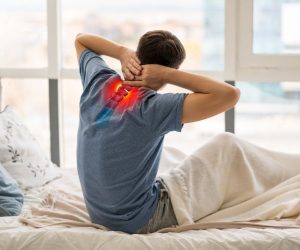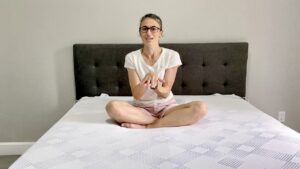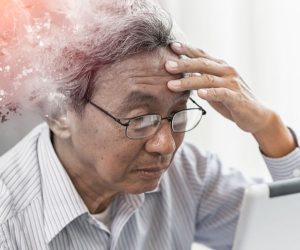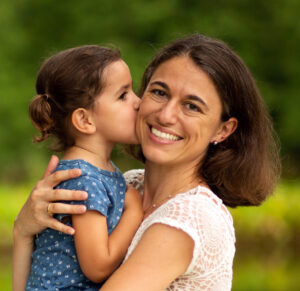WHAT CAUSES SLEEPWALKING
Sleepwalking, also known as somnambulism, is a sleep disorder that causes a person to get up and walk or perform other activities while they are still asleep.
While often made fun of in movies, it is an actual condition, which can seem scary as the sleeper has no recollection of his sleepwalking the next morning.
Sleepwalking is more common in children, but adults can also experience it. While the exact cause of sleepwalking is not entirely understood, there are several factors that are believed to contribute to this condition. Let’s take a look at what causes sleepwalking!
Table of Contents
What Is Sleepwalking
As mentioned above, sleepwalking is the act of moving around as if awake, while sleeping, and during the deepest stage of non-REM sleep. For a person next to a sleepwalker, it can be really hard to determine whether the person is sleeping or not.
Sleepwalking typically occurs during the first couple of hours of sleep, and usually not during napping. During an episode, the sleeper will generally sit up, walk around, and have open eyes. In rare cases, the person may decide to drive a car, leave the house, want to eat or speak, get dressed, go to the bathroom (not always in the bathroom), and even have sexual intercourse.
If you witness sleepwalking, you may notice glassy eyes, slurred speech, inability to engage in conversation, disorientation, walking around with no goal, and you will notice that it is extremely challenging to wake the person.
While sleepwalking should not be a cause for concern, mention it to your doctor / pediatrician if it becomes frequent or disruptive (to the sleeper or family members), or if it starts as an adult or continues into your child’s teenage years.
Genetics
Studies have shown that genetics play a role in the development of sleepwalking. Research has found that if one or both parents are sleepwalkers, their children are more likely to sleepwalk. In fact, it is estimated that up to 80% of sleepwalkers have a family history of the condition.
The American Academy of Neurology states that adult sleepwalking may be linked to a genetic disorder. Of the patients tested during a sleepwalking study in Bern, Switzerland, “50% had the HLA DQB1*05 genetic susceptibility,” versus 24% of healthy people tested. Note that the study was conducted on a fairly small group of individuals.
It is important to note that not everyone who has a family history of sleepwalking will necessarily develop the condition. However, in that sleep test, for “24% of the patients, other family members were also sleepwalkers.”
Sleep Deprivation
Sleep deprivation can increase the likelihood of sleepwalking. When a person does not get enough sleep, their brain does not enter into the proper stages of sleep, which can lead to sleepwalking. According to AAN, “adult sleepwalking may overlap with another sleep disorder, called REM sleep behavior disorder.”
Neurologist Claudio Bassetti explains that “normally, REM, or rapid eye movement, sleep is accompanied physiologically by paralysis, which protects us from acting out our dreams. In people with REM sleep behavior disorder, this paralysis doesn’t occur normally,” which leads to sleepwalkers acting out their dreams.
Additionally, irregular sleep schedules, such as shift work, travel, or jet lag, can also increase the risk of sleepwalking. John Hopkins Medecine determined that most sleepwalking is related to sleep deprivation, and recommends improving your sleep hygiene to help with the condition. The tips given in this article will greatly help improve your sleep hygiene and set you up to a night of restorative sleep.
Medical Conditions
Certain medical conditions can contribute to the development of sleepwalking. For example, sleep apnea, which causes breathing difficulties during sleep, can increase the risk of sleepwalking. Other medical conditions that can contribute to sleepwalking include gastroesophageal reflux disease (GERD), restless leg syndrome, and seizures. Stress and fever are also on the Mayo Clinic’s list.
All of those medical conditions impact the quality of your sleep and can disturb your natural sleeping stages. Going through a sleep test to determine the root cause of your sleeping problems, and treating those conditions, may naturally resolve sleepwalking.
Medications
Some medications can increase the likelihood of sleepwalking. Medications that affect the central nervous system, such as sedatives, tranquilizers, hypnotics, sleeping pills, Alzheimer treatment, and some medications used to treat certain psychiatric disorders can disrupt the sleep cycle and increase the risk of sleepwalking.
VeryWell Health mentions that those medications sometimes have effects on muscle control during the REM sleep phase. “Rather than normal sleep paralysis occurring, muscle tone is increased and it becomes possible to act dreams out.”
They name some of the most commonly used medication groups that incite muscle tone in REM and REM behavior disorder:
- selective serotonin reuptake inhibitors (SSRIs)
- tricyclic antidepressants (TCAs)
- monoamine oxidase inhibitor
- anticholinesterase inhibitor
- beta-blockers
- prescription medication to treat insomnia
Alcohol And Substance Use
Alcohol and substance use can also contribute to sleepwalking, though there has not been any studying done on their relationship. Alcohol and certain drugs can disrupt the sleep cycle, leading to sleepwalking episodes.
Since alcohol and drug use may lead to fragmented sleep due to relaxing the upper-airway muscles (increased risk of sleep apnea), the body can find itself waving in and out of consciousness, increasing the risk of sleepwalking.
Unfortunately, withdrawal from alcohol, cocaine, and amphetamine abuse, as well as prescription drugs such as barbiturates and meprobamate, may lead to episodes of sleep behaviors, including sleepwalking.
It does appear, however, that there is evidence that excessive use of caffeine and even chocolate may cause REM behavior disorder.
The Risks Of Sleepwalking
Since the sleepwalker is moving around in his/her sleep, it is important that, if you have a family member who sleepwalks, you protect him/her from injuries and hazards.
This is especially important in young children – think about the risks of falling from a second story, opening a bedroom window, or even walking out the front door. In a very unfortunate case, a toddler wandered out of his home in the Canadian winter, only to be found lifeless the next morning, when the family woke.
If you have a sleepwalker at home, it is important to set door and window alarms, add stair gates, avoid using bunk beds, or even maybe a movement detector if this is a young child.
What Causes Sleepwalking
While the exact cause of sleepwalking is not entirely understood, and can be different from one person to the next, genetics, sleep deprivation, medical conditions, medications, and alcohol and substance use can all contribute to this condition.
If you or someone you know is experiencing sleepwalking, it is important to talk to a healthcare provider to determine the underlying cause and develop an appropriate treatment plan.
FAQ
Most frequent questions and answers
It is generally easy to diagnose sleepwalking if the sleeper lives with family members or roommates who notice the unusual nighttime activity associated with sleepwalking.
While no drug exists to treat sleepwalking, the condition is usually a symptom of external cause or an underlying condition. Treating the condition first will often result in getting rid of sleepwalking.
Children are most at risk of sleepwalking. Though a genetic factor seems to exist, making children of sleepwalking parents more likely to sleepwalk. Adults can also start sleepwalking and should consult a doctor to understand the underlying cause.
If the sleepwalker is a child, it is important to set door and window alarms, add stair gates, avoid using bunk beds, or even maybe an indoor movement detector if this is a young child. For adults, the risk is with walking out of the door, cooking, driving. An indoor alarm and door/window alarm can help too.
More Sleep Resources

What Is Luften | How, When, How Much, and Everything Else You Should Know
WHAT IS LUFTEN What, How, When, And Everything Else If you are looking for simple, yet effective, ways to boost your health, improve your sleep,

Best Pillow For Sore Neck
BEST PILLOW FOR SORE NECK Our Top Picks and Expert Tips for Pain-Free Sleep A sore neck can disrupt your entire day—and a bad pillow

5 Benefits of Memory Foam Mattresses | Why They’re Worth Considering for Better Sleep
5 BENEFITS OF MEMORY FOAM MATTRESSES Why They’re Worth Considering for Better Sleep Memory foam mattresses have become a go-to choice for sleepers seeking comfort,

How Does Sleep Improve Memory?
HOW DOES SLEEP IMPROVE MEMORY? Make Sleep a Priority for Better Memory In today’s fast-paced world, where productivity is often prioritized over rest, many underestimate
How is sleepwalking diagnosed?
It is generally easy to diagnose sleepwalking if the sleeper lives with family members or roommates who notice the unusual nighttime activity associated with sleepwalking.
Can sleepwalking be treated?
While no drug exists to treat sleepwalking, the condition is usually a symptom of external cause or an underlying condition. Treating the condition first will often result in getting rid of sleepwalking.
Who is at risk for sleepwalking?
Children are most at risk of sleepwalking. Though a genetic factor seems to exist, making children of sleepwalking parents more likely to sleepwalk. Adults can also start sleepwalking and should consult a doctor to understand the underlying cause.
What safety precautions should be taken for someone who sleepwalks?
If the sleepwalker is a child, it is important to set door and window alarms, add stair gates, avoid using bunk beds, or even maybe an indoor movement detector if this is a young child. For adults, the risk is with walking out of the door, cooking, driving. An indoor alarm and door/window alarm can help too.
Share this deal with a friend!

Laura Georgieff
Laura is a mother of three who did not sleep through the night for the first 5.5 years of her kids' lives. She is passionate about sleep quality and loves sharing her experience and knowledge of all thing bedding! It is her mission to help you make the best decisions when it comes to sleep and help you get the best deal on the market!


